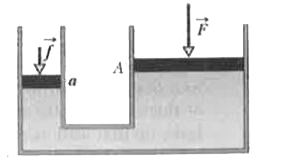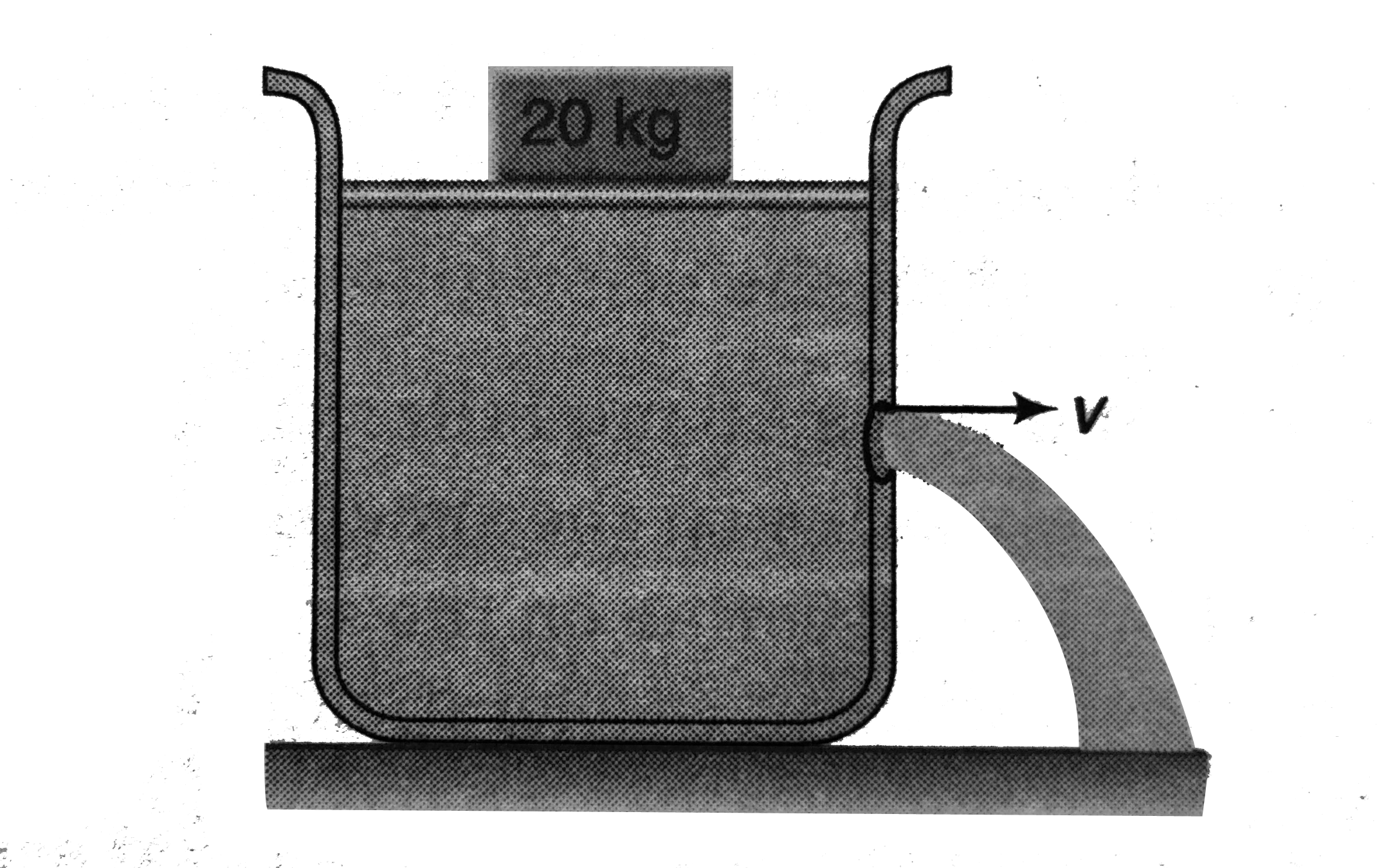A piston of cross-sectional area 100 cm is used in a hydraulic press to exert a force of 10.dyne on water. The cross-sectional area of the other piston which supports a truck of mass 200 kg is,
1.96cm2
0.196m2
0.98m2
98m2
The correct Answer is:B
Topper's Solved these Questions
- BOOK - AAKASH SERIESCHAPTER - FLUID MECHANICSEXERCISE - LECTURE SHEET (EXERCISE-I) (Integer Type Questions )2videos
FLUID MECHANICS
- BOOK - AAKASH SERIESCHAPTER - FLUID MECHANICSEXERCISE - LECTURE SHEET (EXERCISE-II) (Straight Objective Type Questions)8videos
FLUID MECHANICS
- BOOK - AAKASH SERIESCHAPTER - EXPANSION OF SOLIDS EXERCISE - Questions for Descriptive Answers5videos
EXPANSION OF SOLIDS
- BOOK - AAKASH SERIESCHAPTER - FRICTION EXERCISE - ADDITIONAL PRACTICE EXERCISE PRACTICE SHEET (ADVANCED) (MORE THAN ONE CORRECT ANSWER TYPE QUESTIONS)1videos
FRICTION
Similar Questions
A piston of cross-sectional area 100cm2 is used in a hydraulic pressure to exert a force of 107 dyne on the water. The cross-sectional area of the other piston which support a truck of mass 2000 kg is
View SolutionA piston of cross-sectional area a is used in a hydraulic press to exert a small force of magnitude f on the enclosed liquid. A connecting pipe leads to o a larger piston of cross sectional area A (Fig. 14-53). (a) What force magnitude F will the larger piston sustain without moving? (b) If the piston diameters are 3.50 cm and 60.0 cm, what force magnitude on the large piston will balance a 20.0 N force on the small piston?
 View Solution
View Solution
Knowledge Check
- Question 1 - Select One
A piston of cross-sectional area 100cm2 is used in a hydraulic pressure to exert a force of 107 dyne on the water. The cross-sectional area of the other piston which support a truck of mass 2000 kg is
A9.8×102cm2B9.8×103cm2C1.96×103cm2D1.96×104cm2 - Question 2 - Select One
A piston of cross-sectional area 100cm2 is used in a hydraulic pressure to exert a force of 107 dyne on the water. The cross-sectional area of the other piston which support a truck of mass 2000 kg is
A100cm2B109cm2C1.96×104cm2D2×1010cm2 - Question 3 - Select One
A cyclinderical vessel of cross-sectional area 1000cm2, fitted with a frictonless piston of mass 10kg, and filled with water completely. A small hole of cross-sectional area 10mm2 is opened at a point 50cm deep from the lower surface of the piston. The velocity of efflux from the hole will be
A10.5m/sB3.4m/sC0.8m/sD0.2m/s
A long cylindrical tank of cross-sectional area 0.5m2 is filled with water. It has a small hole at a height 50cm from the bottom. A movable piston of cross-sectional area almost equal to 0.5m2 is fitted on the top of the tank such that it can slide in the tank freely. A load of 20kg is applied on the top of the water by piston, as shown in the figure. Calculate the speed of the water jet with which it hits the surface when piston is 1m above the bottom. (Ignore the mass of the piston)
 View Solution
View SolutionA long cylindrical tank of cross-sectional area 0.5m2 is filled with water. It has a small hole at a height 50cm from the bottom. A movable piston of cross-sectional area almost equal to 0.5m2 is fitted on the top of the tank such that it can slide in the tank freely. A load of 20kg is applied on the top of the water by piston, as shown in the figure. Calculate the speed of the water jet with which it hits the surface when piston is 1m above the bottom. (Ignore the mass of the piston)
 View Solution
View SolutionThe mechanical advantage of a hydraulic press is 5.
A car of mass 1500 kg is lifted by when placed on a piston of a hydraulic press of area of cross section 5 m2. Find the area of cross section of pistion of piston where the effort is applied.View SolutionAn object of weight 500kgwt is lifted by using a hydraulic press. The radii of the cross sections of the pump piston and press piston are 10 cm and 20 cm, respectively. Calculate the effort required to lift the object. Calculate the displacement of the load if the effort is moved through a distance of 20 cm.
View SolutionAn object of weight 500kgwt is lifted by using a hydraulic press. The radii of the cross sections of the pump piston and press piston are 10 cm and 20 cm, respectively. Calculate the effort required to lift the object. Calculate the displacement of the load if the effort is moved through a distance of 20 cm.
View Solution

